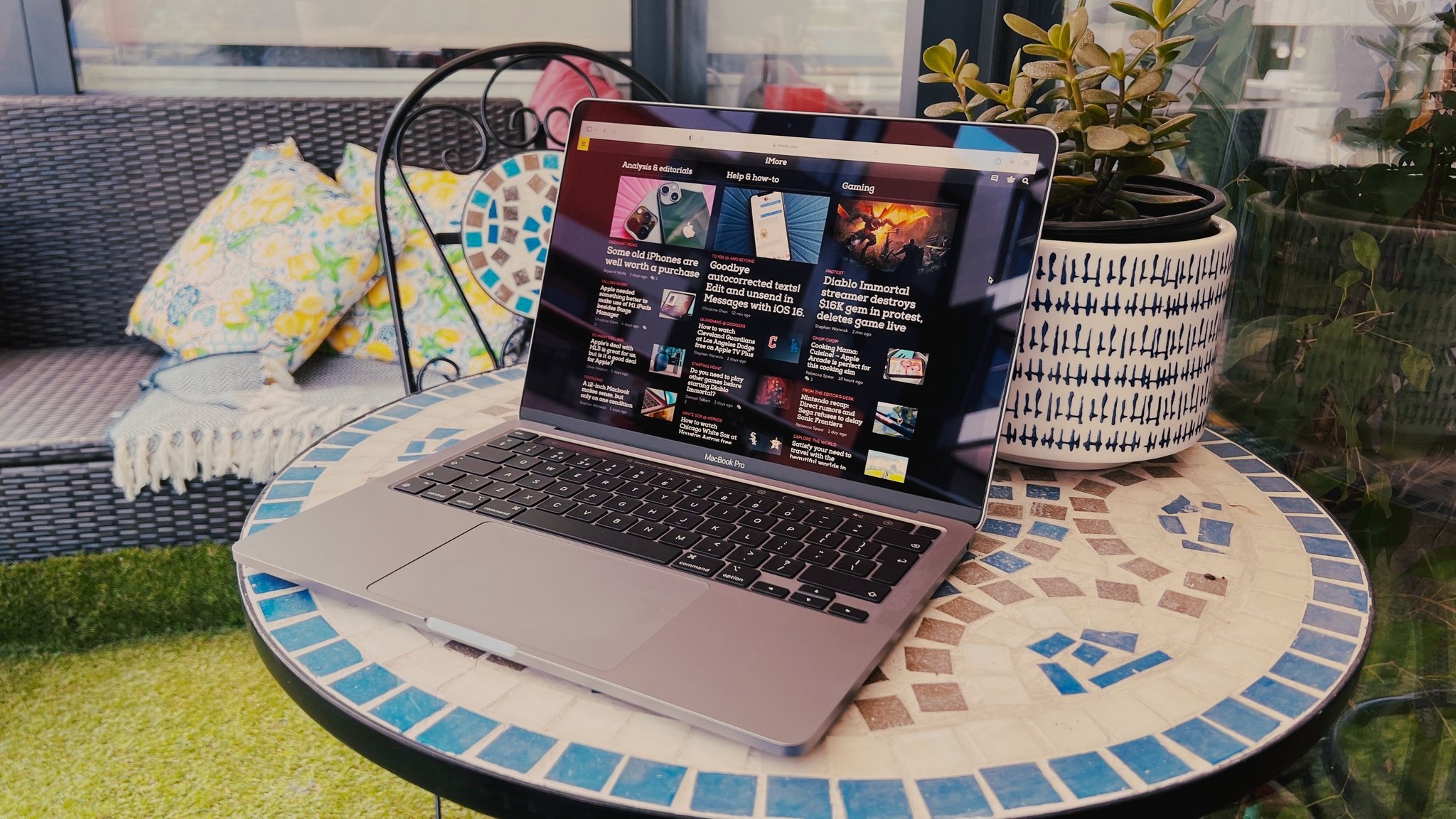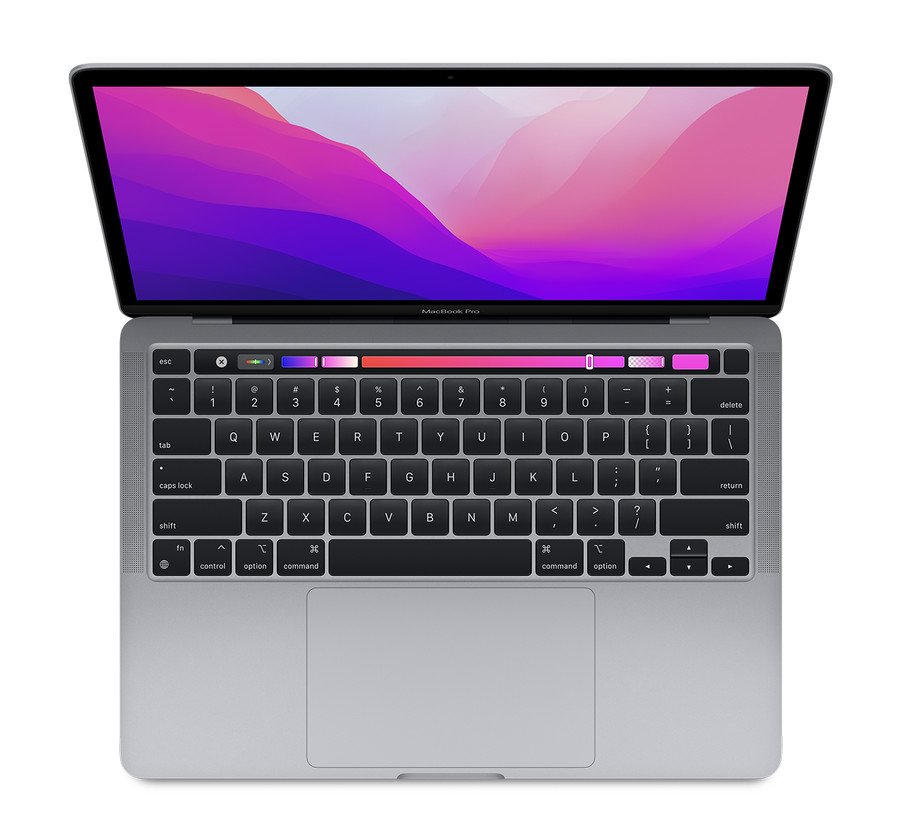iMore Verdict
The M2 chip is impressive in the new 13-inch MacBook Pro, offering more power and performance than ever before, but you will have to deal with an older design.
Pros
- +
Super-fast M2 chip performance
- +
Excellent battery life
- +
Great build quality and software
Cons
- -
Lacking newer design features of larger MacBook Pros
- -
Webcam lacks fidelity
- -
Would benefit from more ports
You can always trust iMore.
The 2022 MacBook Pro 13-inch laptop's thunder may have been stolen by the arrival of its new MacBook Air stablemate, but the Pro machine still has a few tricks up its sleeve to keep its slimline cousin on its toes.
First revealed during this summer's WWDC event, the MacBook Pro 13-inch for 2022 played second fiddle to the flashy and newly-redesigned M2 MacBook Air. While both offered the same, newly-minted generation of Apple's own silicon in the M2 chip, the drastic redesign of the Air took some of the wind out of the new Pro's sails – and likely its potential sales, too.
With very little changed externally from previous years' 13-inch MacBook Pro designs, the question on everyone's lips was just how new is the latest 13-inch MacBook Pro with M2 chip?
The answer is "just enough," and that's what we'll be dissecting here. This revved-up 13-inch refresh of the MacBook Pro line is full of new internal wizardry thanks to its second-generation M2 Apple silicon system on a chip. But externally, the new MacBook Pro retains a very familiar design, one that Apple has used for the line for some years now.
Does that design still have its place amongst the best Macs? Is the new M2 chip blazing a trail that the M1 can't match? And is the 2022 13-inch MacBook Pro with M2 worth your hard-earned cash, knowing that the 2022 MacBook Air has some flashy new tricks of its own at a lower price? Let's find out.
- Not sure which MacBook is for you? Check out our in-depth MacBook Pro vs MacBook Air guide
MacBook Pro 13-inch (M2, 2022) : Price and availability
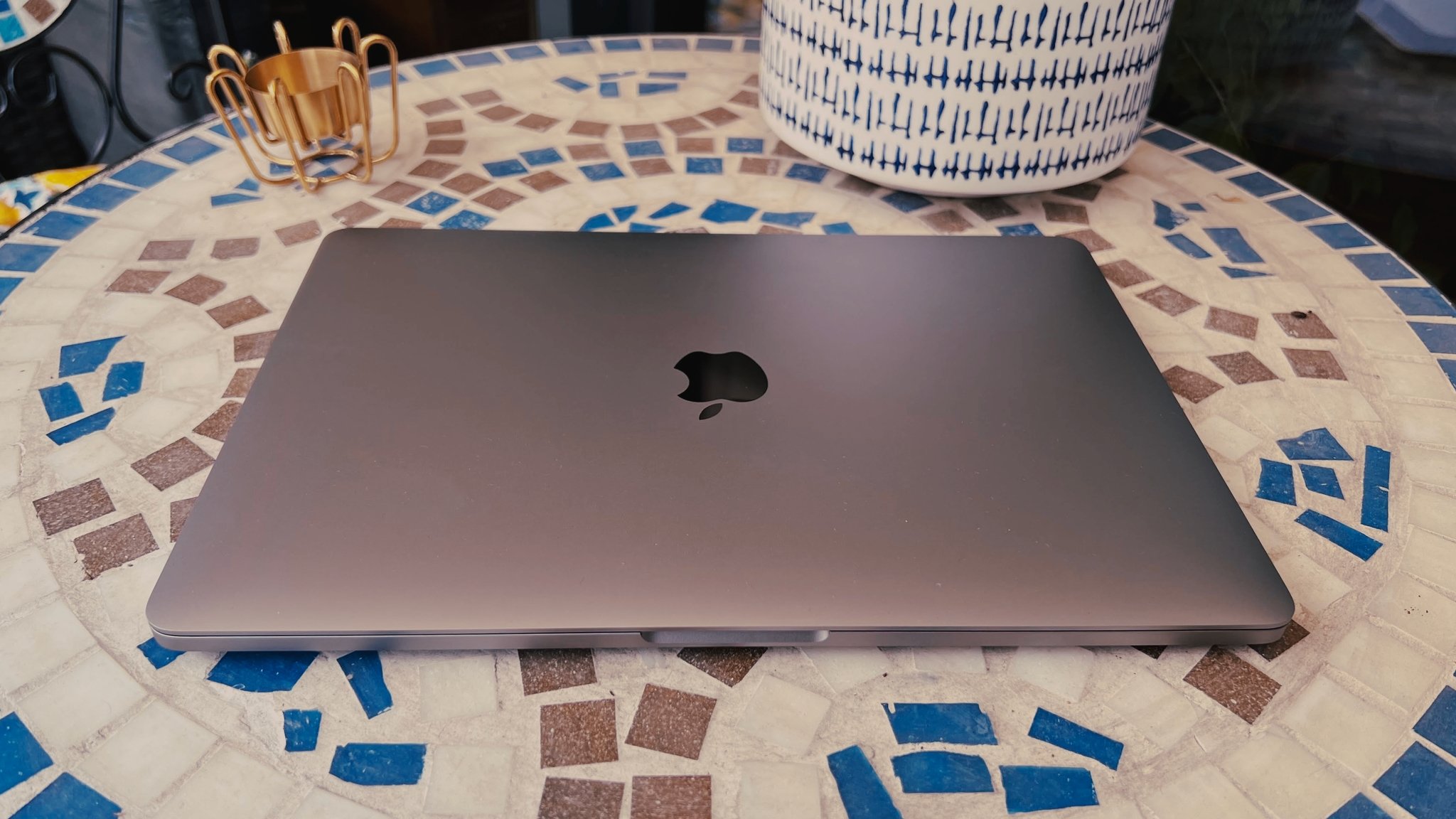
The 13-inch MacBook Pro with the M2 chip is available to order now, with a shipping and release date set for June 24, 2022.
Prices start at $1,299 / £1,349 for the base specs with 8GB of RAM and 256GB of SSD storage. You can configure up to 24GB of LPDDR5 RAM and 2TB of storage for as much as $2,499 / £2,549. Remember that it's not easy to upgrade the internal components of a MacBook Pro after purchase, so consider not only the specs you'll need right now but also over the laptop's lifetime.
M1 MacBook Pro models at 13 inches can now be found at a slight discount ahead of the new model's release, and that's likely to become more common as you head into Amazon Prime Day and the Black Friday deals season. If you're on a budget, they remain powerful options with potentially excellent value.
And while the M2 MacBook Pro has enough power to justify its price tag, the incoming M2 MacBook Air for 2022, with an all-new design that's thinner and lighter than the Pro here, may be worth holding out for before committing the cash. It's cheaper in its base configuration and a match for the M2 Pro when specced to the same price point, lightweight with a larger screen, and has more port options thanks to its MagSafe charging, which is absent from the aging M2 MacBook Pro's industrial design. With the 2022 M2 MacBook Air review now available for comparison, making that choice might be easier than you first thought – it's an almost-flawless machine.
MacBook Pro 13-inch (M2, 2022): Hardware and design
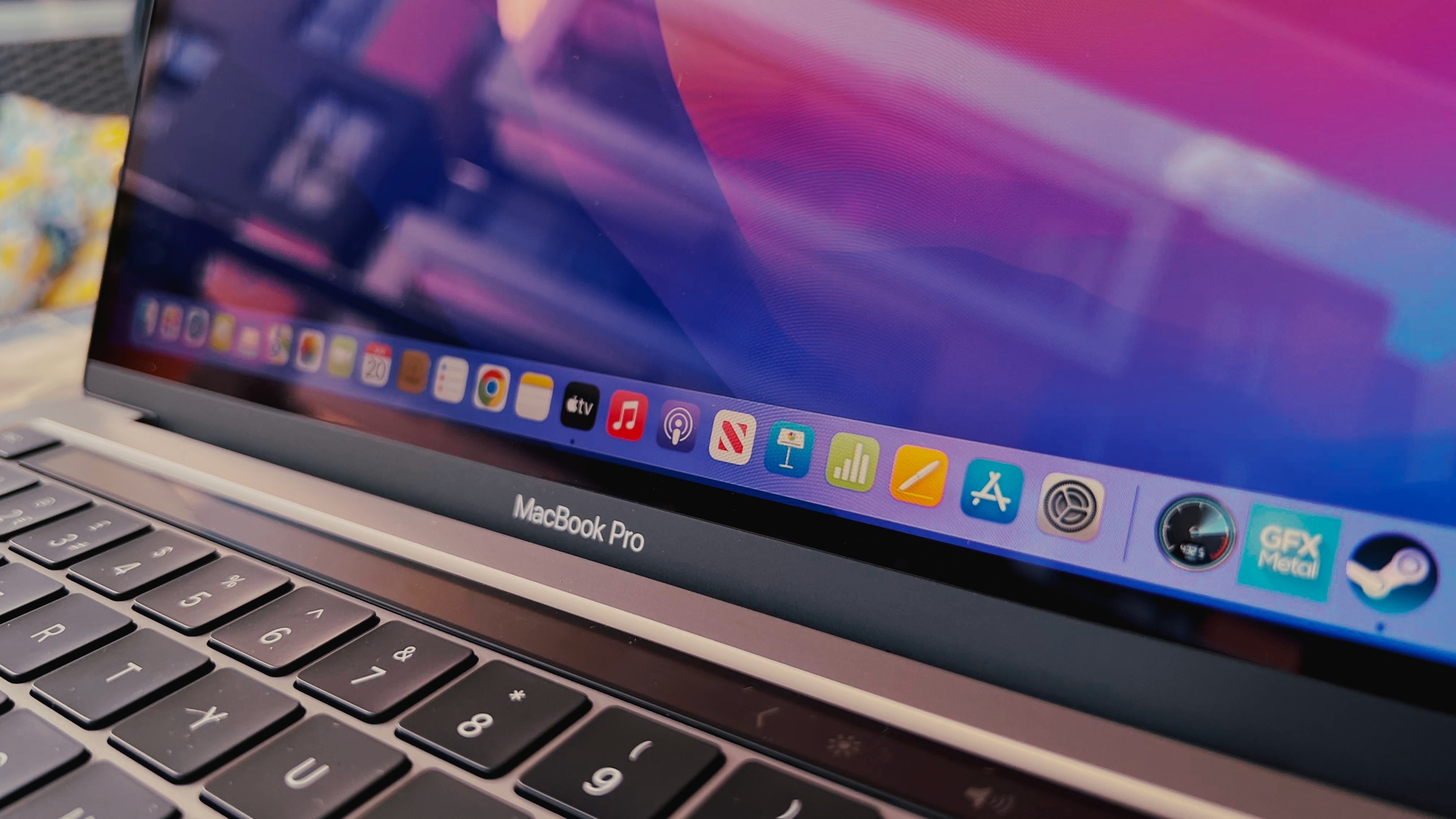
It's a tried and tested look for the 13-inch MacBook Pro for 2022, with this year's version of the machine identical in terms of external design as to the 13-inch MacBook Pro models of the past few years. That's no bad thing – the 13-inch MacBook Pro has an attractive, sturdy look and feel that we've long loved. But, a few gray hairs are starting to show now and, with Apple's silicon hitting its second generation, it feels like the external design is due a revision of its own to bring it in line with the 14-inch and 16-inch MacBook Pro models, not to mention the recently unveiled MacBook Air redesign.
So, in terms of dimensions, it's pretty much an identical match: you're looking at a 3.08-pound (1.4kg) machine measuring 1.56-by-30.41-by-21.24cm. Color options remain the same, with the long-standing duo of Space Gray and Silver returning, but not the Midnight or Starlight options that were introduced with the 2022 MacBook Air.
That veteran design includes Apple's Magic Keyboard with Touch Bar. Apple has consistently improved its laptop keyboard since the fiasco with the butterfly key design a couple of generations back. Here, you have a good-sized, well-spaced set of keys that offer satisfying travel for touch typing. The Touch Bar has always been an acquired taste, and your mileage here will vary depending on the Touch Bar apps that support its OLED touchscreen set of shortcuts and contextual commands, as Apple has pretty much abandoned new use cases for it over the years. But it's at least flanked these days by physical Escape and power buttons, with the latter incorporating a responsive Touch ID fingerprint scanner for password management and payment authentication. All keys, aside from the power button, include an adjustable backlight.
The Touch Bar has always been an acquired taste, and your mileage here will vary.
The returning port array will look familiar as well, with just the pair of Thunderbolt slots on the left-hand side of the chassis plus a headphone jack on the other side. Those ports have been bumped up to the Thunderbolt 4 standard, though, rather than the Thunderbolt 3 versions you'd find on earlier 13-inch MacBook Pro models, giving them a bit more bandwidth. However, whereas the incoming 2022 MacBook Air frees up a port from charging by the inclusion of MagSafe, here you're always going to lose one port anytime you need to put some juice back into the battery, so keep a USB-C dongle handy.
The display on the 13-inch MacBook Pro for 2022 is gorgeous, and, for those that gawp at the sight of the webcam 'notch' that's invaded other MacBook Pro models, you'll be pleased to hear you have a standard, notch-less black border around the screen. That means you see no screen real estate improvements over earlier models, though, with the 2022 13-inch MacBook Pro only offering 13.3 inches to play with on the diagonal. Still, it's lovely to look at, with a 2560x1600 resolution and support for the wide P3 color gamut. You only get 500 nits of brightness, which is significantly dimmer than what's on offer from the 14 and 16-inch MacBook Pros, but it's still legible in harsh lighting conditions.
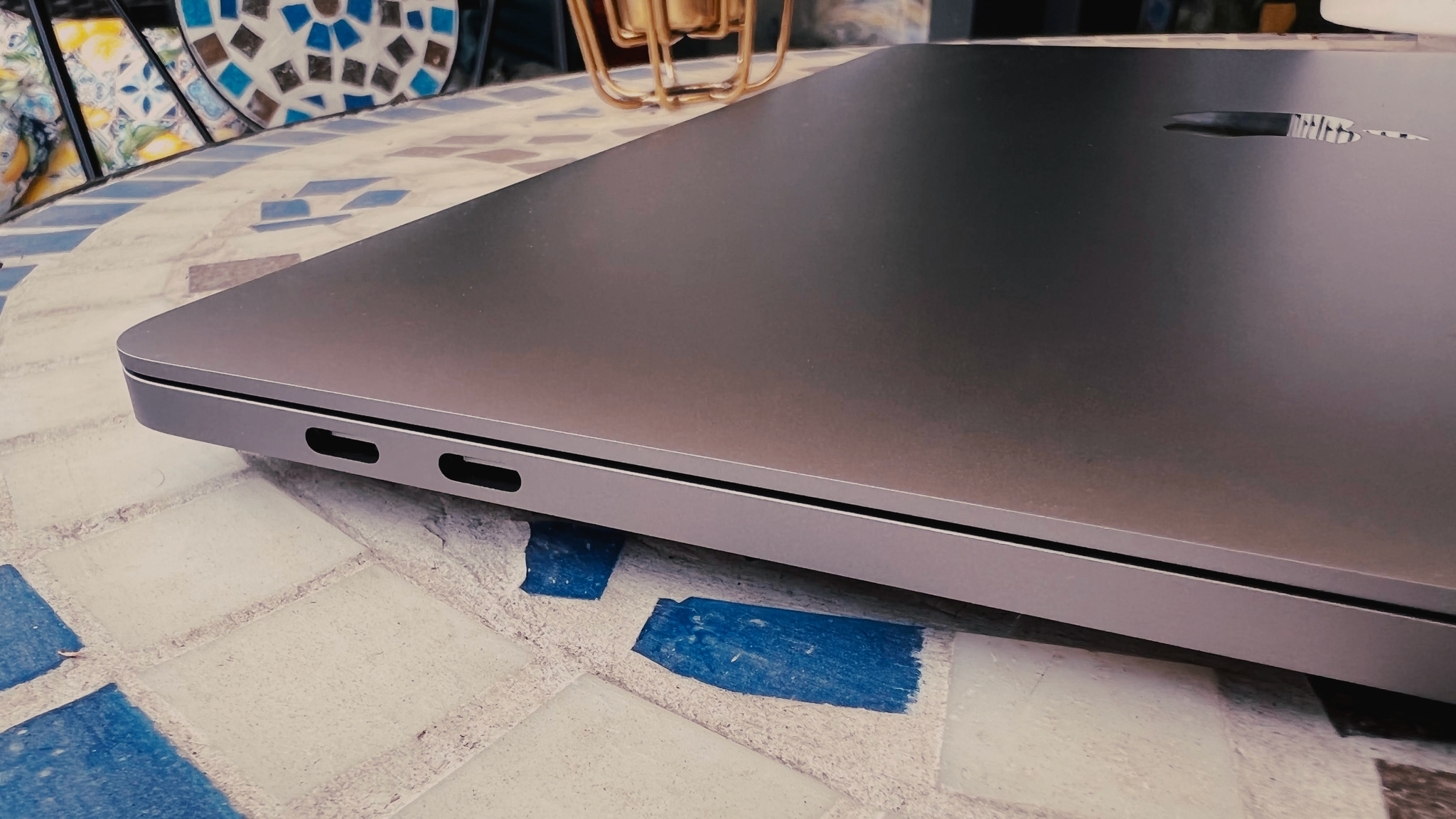
That border around the screen also neatly hides the FaceTime webcam, but it's one of the most-lacking elements of the design at this point. It's stuck with the legacy 720p resolution that's been part of the package for years, whereas its MacBook stablemates have all made the jump to 1080p. It's not a terrible camera; it's just no longer keeping pace with the quality expected from video calls in the pandemic age, where work-from-home video meetings are now the norm.
Remember, this MacBook Pro does have cooling fans, unlike the MacBook Air.
Keep in mind that the MacBook Pro 13-inch for 2022 retains active cooling fans as part of its internal structure, something missing from the MacBook Air lineup. If you're looking to push your machine under a heavy load, those fans will let you do so for longer, keeping the internals cooler over time before throttling kicks in.
As you'd expect from this older design, user repairability is still troublesome. Apple has made some advances in this respect in the larger MacBook Pro designs, but be prepared to seek out a trained, authorized repair specialist should you encounter any significant problems with this model.
As we're about to discuss, though, what's on the inside of the new 13-inch MacBook Pro counts the most: the M2 chip.
MacBook Pro 13-inch (M2, 2022): Software and performance
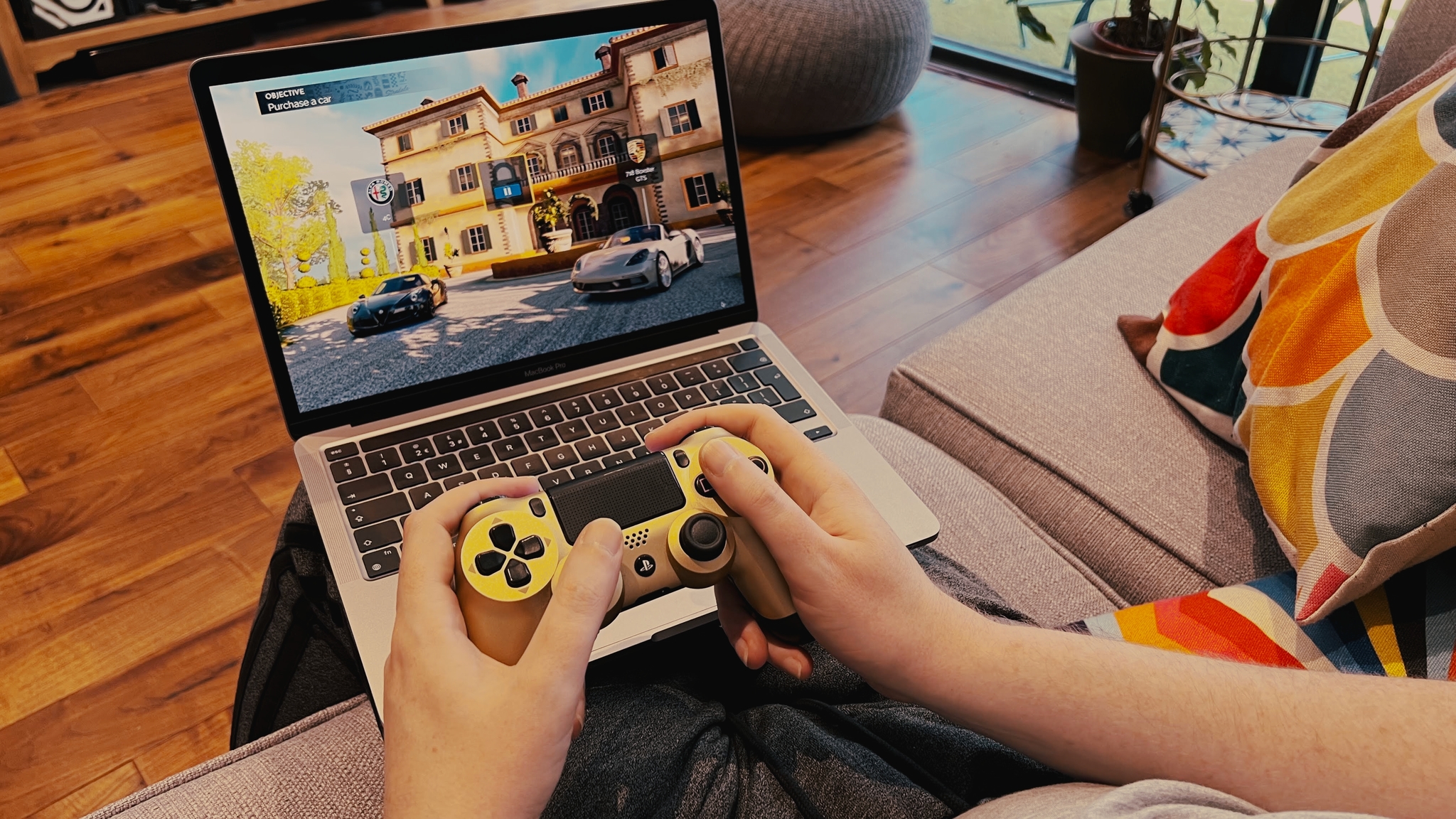
Apple's M2 chip is a beast, wiping the floor even with the last-generation M1 chip. The speed with which Apple silicon is advancing should be cause for concern for Intel, which has seen its laptop-class chips struggle to keep the pace in recent years. Apple's speed of innovation here is out of the traps at a remarkable pace.
For the 13-inch MacBook Pro, the M2 chip boasts an 8-core CPU with four performance cores and four efficiency cores, a 10-core GPU (two more than present in the M1), and a 16-core Neural Engine.
The numbers that Apple is claiming here are quite remarkable. According to Apple, the M2 13-inch MacBook Pro boasts an 18% faster CPU than the equivalent-sized M1 MacBook Pro, a giant 35% performance increase when it comes to the GPU, and 100GB/s memory bandwidth – a 50% jump over M1. Converting video footage to ProRes in Final Cut Pro is clocked at almost 3x faster than with the M1 chip and almost 8x faster than with legacy quad-core i7 MacBook Pros. Using Affinity Photo to edit RAW image files sees similarly impressive gains according to Apple, with results almost 1.5x faster than the M1 chip and almost 3.5x faster than with that i7 MacBook Pro again.
That seems broadly in line with findings from our benchmark testing, with sustained multi-core performance winning out time and again against the competition.
| Device | CPU | Single Core | Multicore |
|---|---|---|---|
| MacBook Pro 13-inch (2022) | M2 | 1,920 | 8,869 |
| MacBook Pro 13-inch (late 2020) | M1 | 1,705 | 7,382 |
| MacBook Air (late 2020) | M1 | 1,702 | 7,400 |
| Dell XPS 17 9700 | i7-10875H | 1,282 | 8,119 |
| Dell XPS 15 9500 | i7-10875H | 1,318 | 7,621 |
| Razer Blade Pro 17 | i7-10750H | 1,314 | 6,164 |
| ASUS ROG Zephyrus G14 | Ryzen 4900HS | 1,221 | 7,982 |
| Surface Book 3 | i71065G7 | 1,298 | 4,511 |
| Dell XPS 13 9300 | i7-1065G7 | 1,284 | 4,848 |
Looking at Geekbench scores, the M2 is hitting a 1920 single-core performance score and 8869 on multi-core performance. Compared to the 13-inch MacBook Pro from late 2020, which scored 1705 and 7382 on the respective benchmark runs, that's a single core gain of almost 12% and a multi-core gain of 18%. Jumping over to GFXBench Metal for 3D graphics performance, and our standard 1440p test was a cakewalk for the M2 (110FPS), to the point where we had to push things beyond the native display resolution of the device to 4K (49FPS) to see what the chip was really capable of.
My daily workflow of spreadsheets and documents didn't touch the sides of what the M2 chip could achieve, but whether you're dipping into edits for multiple 8K video streams or complex Logic multi-track projects, the M2 has headroom to spare. If anything, it's that 8GB base RAM configuration that's going to be the bottleneck here.
My daily workflow of spreadsheets and documents didn't touch the sides of what the M2 chip could achieve.
You're going to have a pretty good time with gaming on the new MacBook Pro's M2 chip too. Running the old reliable Tomb Raider reboot's benchmark at the laptop's native 2560x1600 resolution, with all the bells and whistles dialed up to Ultimate settings, the laptop hovered around the 28-30FPS mark. It's an older game, but that's still impressive for a chipset not expressly designed for gaming. Keep your expectations (and fidelity options) in check, and you should be able to enjoy some modern AAA titles with relative ease. Apple is already teasing ports of Resident Evil Village and No Man's Sky for later in the year. It'll be a breeze if you're sticking with Apple Arcade, though the racing title Gear.Club Stradale failed to load past the menu screens the first time it booted up.
Performance holds up on that shrinking number of apps that were built with Intel chips in mind, too, with Apple's Rosetta emulation layer more stable and discreet in its execution than ever. All apps boot quickly, and multi-tasking between a 50-tab browser, video calls, video playback, and gaming went off without a hitch. I did notice a couple of Chrome hangs, though, particularly with Google Meet video calling in the mix, but it was rare enough to be little cause for concern.
MacBook Pro 13-inch (M2, 2022): Battery
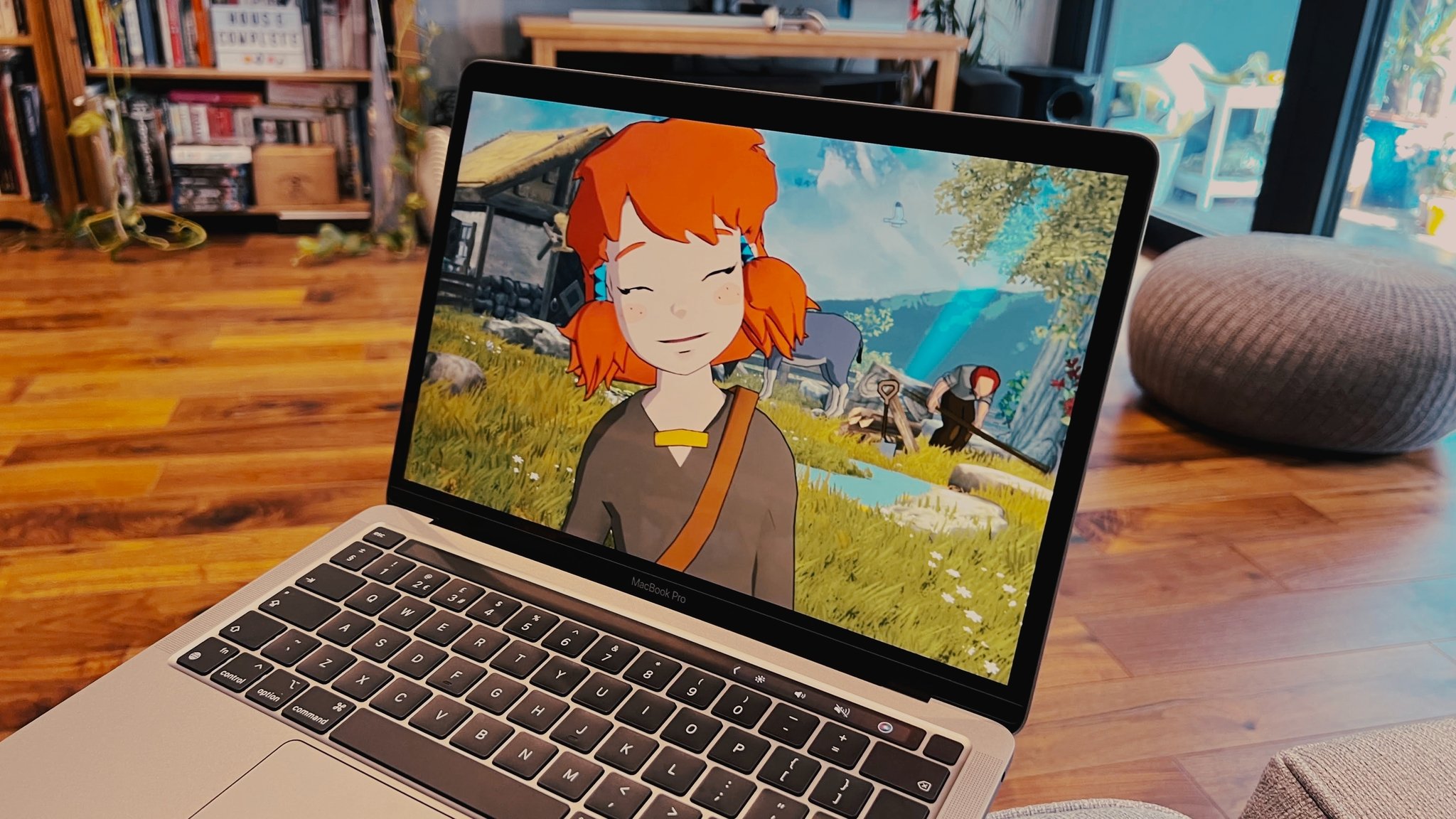
Apple is claiming 17 hours of "wireless web" use with the M2 MacBook Pro and 20 hours of continuous Apple TV video playback, both with the screen brightness set to the halfway mark. With different configurations playing a factor alongside each individual's daily usage habits, it's always tricky to nail down expectations around battery life. But Apple's proposed battery life here seems broadly in line with what we've found so far with the M2 MacBook Pro. You won't struggle to get a day or two's worth of work done with the 13-inch MacBook Pro away from a wall socket unless you're hammering that battery under sustained multi-core and GPU-intensive tasks.
It's also worth noting that this is significantly more than we found when reviewing the 2022 MacBook Air. So if battery life is a key consideration for you, the Pro may be the way to go.
What's impressive here is the M2 chip's performance-to-power-draw ratio. Despite all the advances the M2 chip makes, it's proving to be even more efficient under load. So while performance is going up, battery life has remained identical to what we saw with the M1 chip. That's great; The M2 is offering you more power without the need to worry about decreased battery life. It's worth noting that the performance is sustained whether you're plugged in at a wall or on the go with the battery, too.
MacBook Pro 13-inch (M2, 2022): Competition
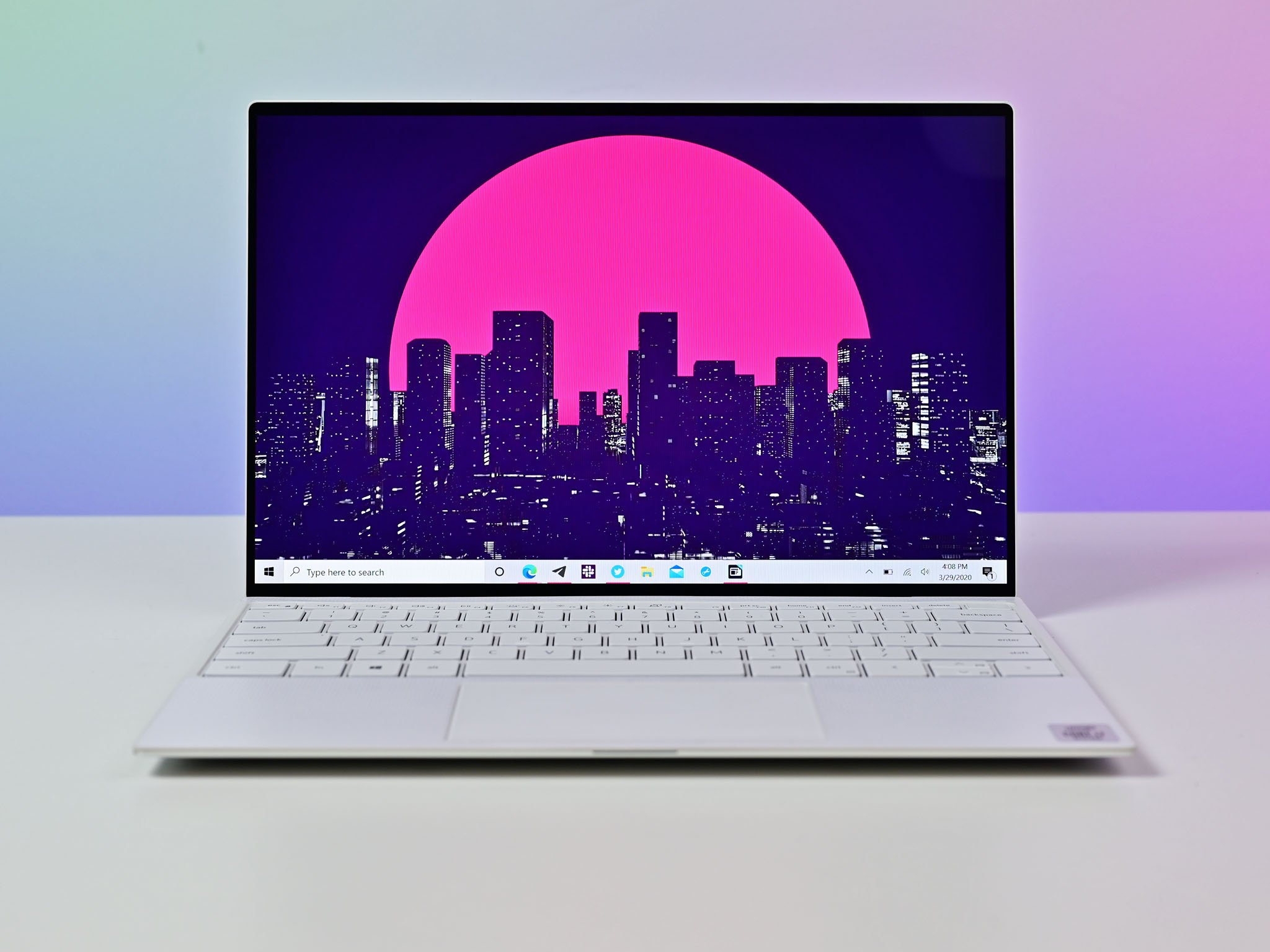
The M2 MacBook Pro sits in an unusual position in terms of competition. As it stands, it's the incoming MacBook Air with M2 chip that will offer the most similar performance at this price point while still offering Apple software, but it has yet to reach the public, and its limitations have not yet been established. And so it's most likely the 14-inch MacBook Pro with M1 Pro chip that's the next-best bet, starting at $1,999/ £1,899. That's a substantial amount more expensive than the 13-inch model, and while its M1 Pro chip still has the edge over the M2 present here, you have to think it can't be long before the M2 Pro chip rears its head.
As ever, you can only buy what's in front of you today, and the M2 MacBook Pro at 13-inch is probably the best MacBook for most people at the time of writing. But that 2022 MacBook Air, for most people, will represent the more attractive – and attractively priced – device. And don't dismiss the M1 MacBooks, either, both Pro and Air – they remain incredible machines and, with the advent of the M2 generation now upon us, are likely to reduce in price.
If you're happy to explore the world of Windows machines, the Dell XPS 13 can be found at similar price points, depending on configuration, and offers a decent bang-for-buck ratio thanks to its 2-in-1 convertible touchscreen design. The performance will vary depending on what internals you pick, but at a similar price point to the M2 MacBook Pro, you should get a very capable machine.
MacBook Pro 13-inch (M2, 2022): Should you buy it?
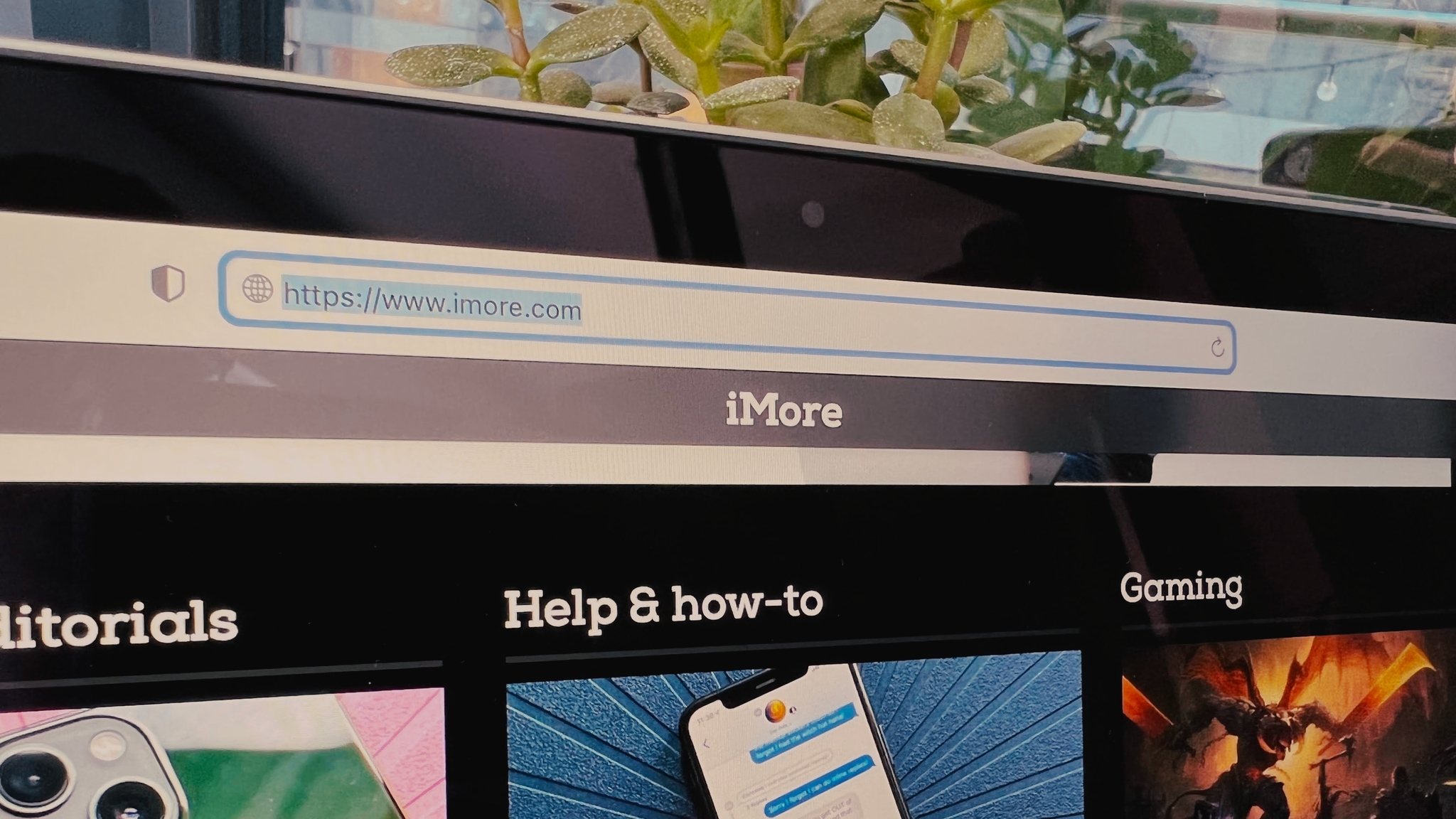
You should buy this if ...
You need sustained performance.
The active cooling fans here allow the latest MacBook Pro to run hotter and faster for longer, making intensive performance tasks like video rendering much easier to handle without overheating and throttling kicking in.
You've grown fond of the Touch Bar.
The 13-inch MacBook Pro 2022 is likely the last time you're going to be able to get it. That, along with the notch-less screen design, is a legacy design feature that looks to be resigned to history once this model's lifespan has run its course, given the looks of the new MacBook Air and larger MacBook Pro options.
You want Apple's latest silicon.
Plus, of course, there's an all-new chip generation in here. Putting even the performance improvements to the side, Apple will be supporting the M2 generation of chips longer than it will the M1 generation, so you'll get at least a couple of additional years of post-release support with this new MacBook model.
You should not buy this if ...
You're looking for an all-new industrial design
This is the exact same external look the 13-inch MacBook Pro has offered up for a few years now, right down to the returning and oft-ignored Touch Bar. Those envious of the slick new design of the 14 and 16-inch MacBook Pro models will have to wait to see if M2 variants of those machines eventually turn up (they will, of course) or potentially even look lower down the range to the very exciting MacBook Air for 2022.
You're on a budget.
The MacBook Pro, even at its 13-inch entry-level spec, is a pricey machine. For most people, the M1 MacBook Air is still more than powerful enough for everyday use and can be found significantly cheaper. Unless you're expecting to do heavy workloads whilst regularly traveling, you may be better served with Apple's lightweight machine.
You need a high-quality built-in webcam.
Remember also that this MacBook still has the rough-and-ready 720p webcam of years past – something that may have been acceptable pre-pandemic but is really showing its age now that we all spend way more time making video calls.
The new 13-inch MacBook Pro is great then for people who want sustained performance, a Touch Bar, or a ride on the new M2 chip, but it isn't the right solution for people who want a new design, a webcam upgrade, or anyone who is on a tight budget.
The 13-inch 2022 MacBook Pro with M2 is a very curious device. You'll got a new generation chip and all the added support longevity that comes with it, but it's trapped in a chassis design that was starting to look a bit aged when the M1 chip generation first made its debut.
This is a fast, capable, and portable device, with the excellent build quality and battery life… but it launched just ahead of the M2 MacBook Air for 2022, which features an all-new, lighter, thinner design and more ports (if you take into account the MagSafe charger of the new Air frees up the second Thunderbolt port for accessories), and a slightly cheaper starting price. The Air is impeccable, and has a freshness the Pro now can't match.
It feels like one final opportunity for Apple to use up its inventory of this particular industrial design rather than to really push the boundaries.
Configure the Air to have the same 10-core GPU performance as the base-level 13-inch M2 MacBook Pro (which brings their pricing up to be identical), and the only thing performance-wise that you'd at least expect to differ would be sustained high-intensity performance, thanks to the active cooling fans in the Pro.
You start to see the picture as to why the 13-inch M2 MacBook Pro becomes a harder sell – you're even getting 0.3 inches of extra screen real estate with the Air, a higher resolution FaceTime webcam (1080p vs. 720p), and all in a lighter package (1.24kg vs. the 1.4kg Pro).
It's not a bad machine. By all measurements, it's an excellent one, well designed and built to last. But it feels like one final opportunity for Apple to use up its inventory of this particular industrial design rather than to really push the boundaries.
Keep this in mind then if you're on the hunt for an entry-level MacBook Pro for now. You'll get your money's worth here, especially if you're enamored with the Touch Bar. But who knows what's in store for the larger sizes in the MacBook Pro range this year? M2 Pro and M2 Max chips, anyone?

Gerald Lynch is the Editor-in-Chief of iMore, keeping careful watch over the site's editorial output and commercial campaigns, ensuring iMore delivers the in-depth, accurate and timely Apple content its readership deservedly expects. You'll never see him without his iPad Pro, and he loves gaming sessions with his buddies via Apple Arcade on his iPhone 15 Pro, but don't expect him to play with you at home unless your Apple TV is hooked up to a 4K HDR screen and a 7.1 surround system.
Living in London in the UK, Gerald was previously Editor of Gizmodo UK, and Executive Editor of TechRadar, and has covered international trade shows including Apple's WWDC, MWC, CES and IFA. If it has an acronym and an app, he's probably been there, on the front lines reporting on the latest tech innovations. Gerald is also a contributing tech pundit for BBC Radio and has written for various other publications, including T3 magazine, GamesRadar, Space.com, Real Homes, MacFormat, music bible DIY, Tech Digest, TopTenReviews, Mirror.co.uk, Brandish, Kotaku, Shiny Shiny and Lifehacker. Gerald is also the author of 'Get Technology: Upgrade Your Future', published by Aurum Press, and also holds a Guinness world record on Tetris. For real.
